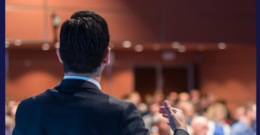Consumer behaviour has changed a lot in the recent years. No longer are they only looking at product features or affordability, they also seek assurance that the brands they do business with are making an effort to positively impact the world.
In Australia, one of the many companies that has held a reputation of working for a better world is Red Havas. And today, Matt Thomas, Red Havas Australia’s Managing Partner Corporate and Public Affairs, joins us to talk about their meaningful brand frameworks.
Matt is a results-oriented, strategy-driven, communications professional who has led multiple campaigns that have won over twenty national and international accolades.
Keep reading to learn more as Matt also discusses the future of ESG communications in Australia and a lot more.
In your LinkedIn bio, you mentioned about leading campaigns that have garnered over twenty national and international awards. What do you think served as your key/s to reaching these milestones?
One of the differences between being in-house and agency is that in agency you generally get to own the results of campaigns but in practical terms the impacts from your work usually belong to the client. So, while it shouldn’t ever be about focusing on award-winning work, industry awards are one of the ways that agency leaders can work to deliver something that feels tangible for the team.
The winning part comes down to having a great team to work with and great clients who all want to see meaningful outcomes. Award-winning teams need a shared approach where, from the newest intern to the most seasoned professional, everyone is open to exploring great ideas regardless of where they come from, and they have the passion and commitment to see those ideas through fruition.
Read also: Values-driven and outcomes-focused leader Matt Macklin of Swinburne (commsroom.co)
For you, why is it important for companies to make meaningful connections with their audiences that demonstrate their mission, purpose and values?
The world has changed and audiences, particularly in developed economies, are cynical of the underlying motivations of companies and organisations. One of my favourite things about working for Havas is the Meaningful Brand Framework which underpins all our work. It says that meaningful brands deliver across three key benefits; the functional, the personal and the collective. While functional benefits will always be a key consideration, I believe that consumers/audiences/publics are increasingly looking to companies to deliver a personal benefit around reducing guilt or anxiety on issues like sustainability and the environment – we all want to know that the companies we spend money with are making a net-positive impact on the world. So, although a brand working towards a greater mission or purpose (beyond delivering returns to their shareholders) is typically viewed as a ‘collective benefit,’ working in this way also doubles down to deliver personal benefits as well.
Do you think ESG comms in Australia is going the right direction? How do you think can Red Havas offer significant support in this particular field?
For me, this is an emerging space in Australia and one that brands, particularly larger ones, are only just starting to come to terms with – there is still a long way to go towards understanding that the communications part of ESG needs to be tied to practical and achievable goals and actions. The thing that excites me about working for Red Havas is that we’ve got a well-deserved reputation for big-thinking creativity. For our clients, it’s our ability to take a corporate lens and bring a human or consumer-focused expression to that lens that is one of our key differentiators.
What developments in the communications industry are you most thrilled to see and why?
One of the biggest changes to come out of the global pandemic for me was the recognition by C-Suites and Boards of the important strategic role that communications has and, in turn, the opportunities that can come from having communications represented throughout all stages of a project and organisation. We see this now in the growing trend for Chief-of-Staff roles in global tech firms that are often filled by people from communications backgrounds and the inclusion of communications professionals on the C-Suite itself alongside more traditional representation from marketing.
You may also want to read: NDIA’s Mariah Fox on the generalist approach to content creation (commsroom.co)
Post Views: 47
Jaw de Guzman is the content producer for Comms Room, a knowledge platform and website aimed at assisting the communications industry and its professionals.




























